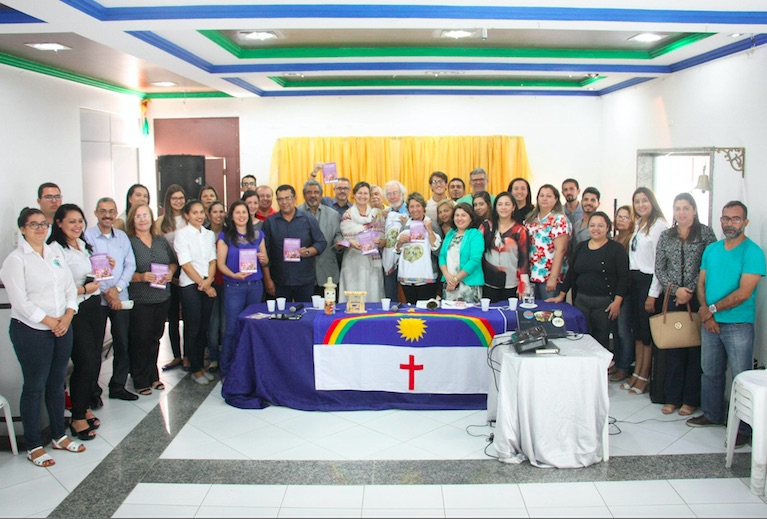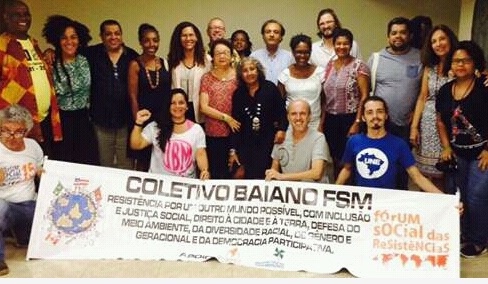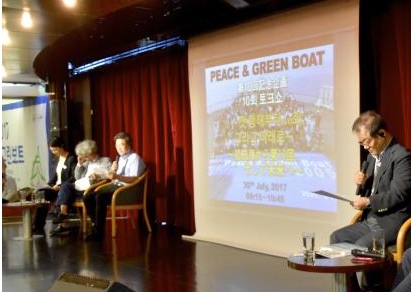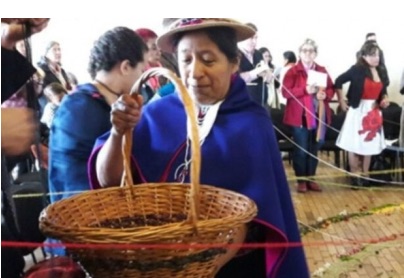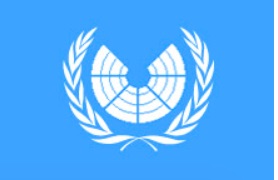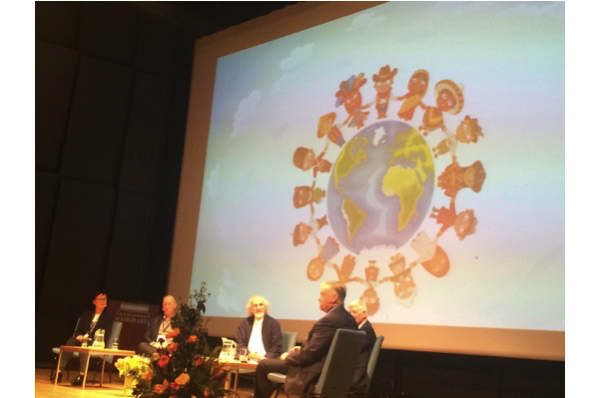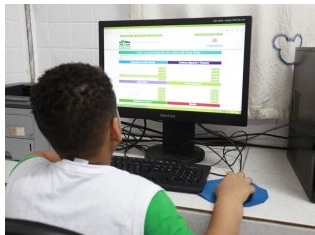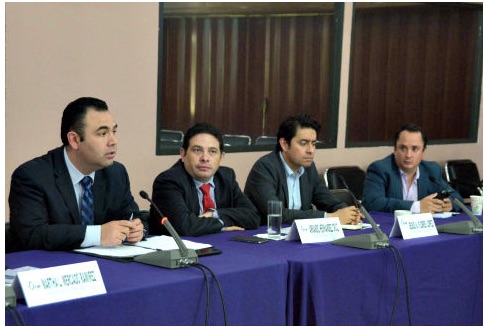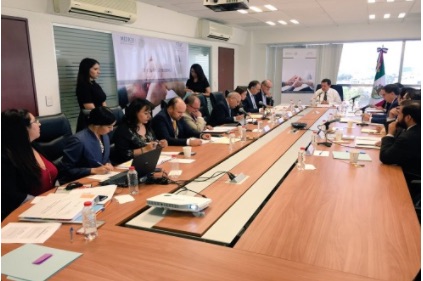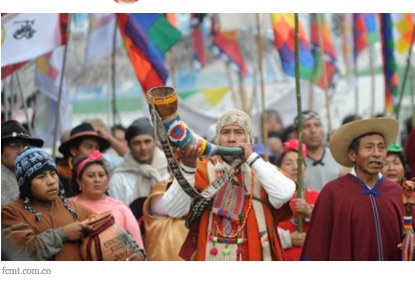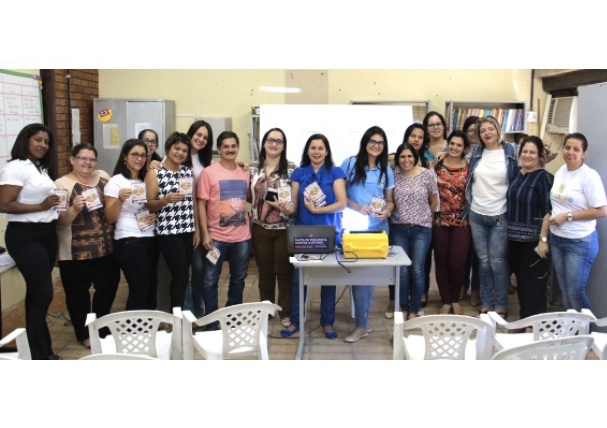. . SUSTAINABLE DEVELOPMENT . .
An article by Paola Jinneth Silva Melo from Propria Agenda
With rituals and ancestral knowledge the indigenous communities in Putumayo are developing processes of healing and forgiveness of the people who were affected in the context of the armed conflict. In this southern region of the country, 13,697 indigenous victims of violence have been recorded.
“When the boys and girls began to weave our necklaces and handles, I realized that in someof them, their physical and emotional state was not balanced. Their hands and eyes could not assure to see the hole of the chaquira with the needle.” It was in this way that Mama Emerenciana discovered that some people were victims of sexual violence.
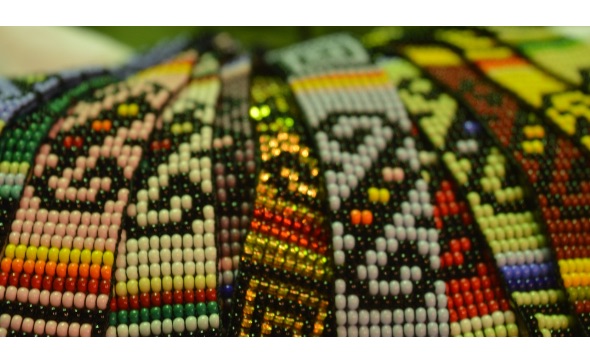
This 54-year-old woman from the Kamentsá indigenous community in Sibundoy, Putumayo, teaches how to weave and to express Kansá sayings on necklaces and bracelets, facilitating a space of trust and word that allows the stories of children, girls and women victims of the armed conflict to be heard.
“We had to talk to families and especially to indigenous men and leaders who did not want to touch the issue. Since then our Corporación Madre Tierra [Mother Earth Corporation], which I lead, seeks to address and prevent sexual violence through indigenous knowledge, “says Mama Emerenciana.
The indigenous leader knows that the armed conflict has divided the communities, which lost their own rules of conduct, leading to sexual and domestic violence, which according to the Network of Women Victims has been hidden, and which is the second greatest cause that leads children and adolescents to join armed groups.
Her idea is that as people weave bracelets and ancestral collars, it is possible to rebuild social bonds, mend and heal with their own art the emotional damages of those who come to her NGO. It has been a work that at the same time rescues the thought of its indigenous culture, very fragmented by the war, and which prevented children and women from exposing themselves and talking about these cases.
Her therapy relies on other medicines such as yagé ceremonies in order to regain self-esteem and as an alternative of differential psychosocial care while the State makes an effective presence.
[Editor’s note: yagé is an entheogen, a native tea that was kept secret by native societies until the 1950s when it was discovered by the Western world, which developed it into psychedelic therapy].
The indigenous communities in Putumayo have been victims of dispossession, recruitment, sexual violence, the outbreak of their territories, and thus cultural loss. According to figures from the Register of Victims (RUV) of the 179,371 indigenous victims, 13,697 belong to this region of the Colombian Amazon.
But how and with what knowledge?
In the Putumayense context where 14 indigenous peoples live together, ancestral knowledge has been important for the recovery of the social fabric. There wise grandmothers, ‘taitas’ (traditional doctors) and professionals in different areas, work to complement each other and rely on the task of achieving confidence, self-esteem, tranquility and peace of their own.
“Knowledge is in thought, it is the knowledge that communities have acquired in permanent relationship with themselves and with everything that surrounds their territory. And for us right there is healing. It is not enough to care for an indigenous victim by only addressing the physical or psychological damages. For any indigenous community to be healthy means to be in harmony in every way, “says Tania Laisuna, social innovator of the Nuh Jay Collective.
She, like Valentina Gonzales of the human rights NGO Casa Amazonia, emphasizes that the ancestral knowledge brings to the victims, knowledge that has always existed in the indigenous communities but which the West ignores.
“In their culture it is a daily practice to resort to wise women, taitas and shamans because from traditional medicines, ceremonial plants and practices there are many elements that allow what they call harmonizations, to treat victims of violence, find a place In the territory, restore energies, recover a sense of trust and identity, “explains Valentina.
It is as if the knowledge were the tool of reconnection to the tranquility that was robbed from them by the war. The knowledge persists thanks to the “mothers, taitas, shamans, sinchis, jaibanas, healers, medicine men and women, who have kept it alive . Such knowledge allows us to reconnect with our essence, through its ceremonies, its sacred rituals, its dances, its songs, its myths and legends, with the use of a great diversity of sacred plants, as is the case with yage, tobacco, mambe, ambil, aguacoya and many more,” says Taita Alfonso, of the Inga people.
Among the wisdom of the communities are the medicines, with the idea is to apply them when there is no disease. “Medicine is to be well and in harmony, it is a whole. It is in the food, in the chagra (orchard), in the yagé take to prevent, guide, heal. But it is also in the relationship with nature and with others. And the healing is in reconnecting with the earth, recognizing and purifying our own body,” asserts Taita Miguel Shindoy of the municipality of Sibundoy.
And with that invisible energy to reconnect the human being have been woven networks to strengthen the purpose of recovering the cultural, social, territory and self-esteem that war destroys. Thus was born a great team that in its beginning was known as the Cocas.
Women and knowledge in action
Sirley Celis is 34 years old, is a psychologist; She resigned her work in psychiatric hospitals of Bucaramanga and arrived at Putumayo nine years ago behind a plant, yagé. Tania Laisuna is from Pasto and has specialized in learning methodologies inspired by ancestral knowledge. Sandra Vargas and Valentina Gonzales are social communicators and head the Corporación Casa Amazonia -COCA. All were called by this land of ancestors to work for the harmony of peoples after the cycles of war.
(Article continued in right column)
(Click here for the Spanish version of this article.)
Question for this article
Indigenous peoples, Are they the true guardians of nature?
(Article continued from left column)
Sirley says that the yagé allowed her to discover that the electro-convulsive therapies and sedation psychiatry was harmful, so she decided to look in the mountains for other alternatives to heal. “I discovered in nature that one can achieve balance and harmony, and I saw in the yagé an opportunity to do psychotherapeutic work.”
Thus she began to work with population victims of the armed conflict, especially women and children who saw their relatives killed and had with them the traumas left by the terror of violence.
“We looked for the emotions of the indigenous people but they did not know that could express them and make them count. Throughout this process we understood that the knowledge that is part of their worldview would give us the intervention strategies. ”
The first thing was to leave the desk and change the language. “We began to realize circles of the word, which is the first form of union of indigenous communities and which in psychology is known as supportive or group therapy. And according to the objective of meeting with the affected communities we could make mandalas or circles of fire, “he says.
Methodologies that she learned and strengthened later thanks to the collective Nuh Jay in the head of Tania Laisuna, who is host to temazcales, dances of peace, listening circles and social technologies considered methodologies that integrate ancestral and contemporary knowledge to meet the current needs.
In this work of social work in a wounded territory they met with Casa Amazonia, who accompanying children, adolescents and women in their process of restitution of rights. They understood that these realities can be addressed in different ways and “what we have seen and corroborated, is that alternative knowledge generates a collective work that strengthens the communities while allowing support for individual processes of recovery and healing, “says Valentina de Casa Amazonia.
Back to the womb to be reborn
One had to find a way to arrive from a language, and there was a universal one: The earth and its elements. Thus were adopted methodologies such as the Temazcal used by Taita Alfonso of the Inga community and who accompanies in this medicine through the NGO Casa Amazonia. The Casa Amazonia has facilitated this practice in schools in rural areas dispersed in the department to strengthen and guide the life purpose of children and adolescents who live with conflict, illegality, domestic violence and abandonment by the state.
Temazcal is a ritual of Central American communities, which resembles a sauna, where several stones acquire the energy from a large bonfire and are put into a hut to be used in a ritual with songs, icaros chants, instruments, and medicinal plants. Their aromas strengthen the purpose of the encounter.
“The temazcal represents the womb. When we enter we return to the womb of the mother with the idea that when we leave the temazcal we will be reborn as new men or women, clean and without disease as we first arrived in this world,” says Taita Afonso.
“When we have done it with raped women, it has helped to clean and make a historical reconstruction of the body, to cry, to endure the heat and to find calm on earth. A person who is a victim of sexual violence could never cleanse the body only with words. Plants and aromas do the job, “explains Sirley.
Dances of Peace
Likewise, songs and dances have their own power as spaces to harmonize the communities and ask forgiveness. This is the case of the Big Day in Sibundoy, which is a meeting to dance, holding hands with other people, crossing words and looking into each other’s eyes, allowing us to break the fears that violence sowed over our own neighbors.
“In the west it has been called peace dances, turning them into a worldwide methodology where many people dance and sing to create spaces of trust in communities where vulnerability, fears, sadness are present and where you can generate an environment to recognize the body , Accept yourself, improve self-esteem, deepen release, heal, listen, “says Tania.
These ancestral practices have also been complemented by experiences such as the ‘mambeadero’, which is a great ‘laboratory of ideas, good thoughts that become a word of life, a word that guides, where a story, a myth or a legend always leaves a teaching to enhance life, to plan a project or to reap the fruit of what was said. It is necessary to have patience, discipline and resistance to listen to the grandfather or who guides a circle of words,” clarifies Taita Alfonso, who also mentions the importance of accompanying the word with medicine.
“Master plants are used, ambil, mambe, coca and tobacco, in perfect alliance, not to put the person into a trance, but to clarify the thought or as food while taking the Caguana, a drink that does not intoxicate but sweetens the word” .
All this is done with the care and guidance of the wise grandparents of the indigenous communities. Although their voices are not recognized by the State, they have survived with their knowledge of violence and are today, as before, vital for the construction of peace.
An example is that of Sirley and Taita Alfonso. Although coming from different cultural origins, today they work together in a joint project, the Ecoaldea Anaconda del Sur, responding to the call to resume and recognize that the wisdom of the people lives on this land and that it is a valid way to build community, to heal, reach consensus and improve ways of life in line with a new community environment.
“Putumayo is a department of people born in its forests and mountains. Among its wealth is silence and magic songs to comfort those who have lost loved ones; The leaves of nettle to purify the body; the brew of Yagé so that the expression of the jaguars and nature can give us back our balanced nature and speak to us with languages and colors.” says Mom Emerenciana. Every time you are knitting something you should think of the person who can use it so that when it is seen with the bracelets or necklaces it highlights its beauty, its worth, its dignity. And think of abused children and girls. She knows that the principle of everything is to think beautiful thoughts and to heal and to prevent the pains of the war in a region violent by its riches, but wise by its peoples.
Note. This story was written within the framework of the Journalistic Challenges led by the editorial board of the organization of journalists – with the support of the DW Akademie. AGENDA PROPIA publishes the history with the purpose of contributing to its visibility.
(Thanks to Myrian Castello, the CPNN reporter for this article)
